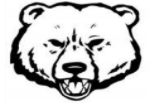Student Dress Code 2025-2026
Dress and Grooming Guidelines
To maintain an atmosphere that is most conducive to learning, scholar attire is expected to be appropriate for school. The purpose of the dress code is to assure that our scholar population will dress in a way that is supportive of, and not disruptive to, the educational process. Clothing is to be worn appropriately and in the manner in which it was designed.
Scholars are responsible for dressing appropriately at all times while at Wagner Middle School or when involved in a school or district-sponsored event/activity. Religious garments as, always, are permitted.
1. Scholars Must Wear
● A shirt (with fabric in the full front (covering the stomach), full back, and on the sides under the arms), AND
● Pants/jeans or the equivalent worn at the waist (for example, a skirt, sweatpants, leggings, a dress or shorts), AND at the knee
● Closed-toe, rubber-bottomed footwear,
2. Scholars Cannot Wear
● Hats with a brim (or style that obscures the face)
This includes masks of any kind unless approved by the school nurse or administration.
● Images or language depicting drugs or alcohol (or any illegal item or activity).
● Hate speech, racial, ethnic, or religious slurs, profanity, pornography.
● Images or language that creates a hostile or intimidating environment based on any protected class or consistently marginalized groups
● Any clothing worn in a manner that reveals undergarments or skin that is not arms or below the knee
● Swimsuits, beach attire, or sleep attire (no pajamas, including pajama pants)
Muscle shirts
Spaghetti strap/halter/mesh tops
Tank tops
See-through blouses or shirts
Tube tops or crop tops
Biker shorts, tights, or bodysuits
● Accessories that could be considered dangerous or could be used as a weapon
Any clothing worn that obstructs the ability to be identified by school staff, excluding religious garment, is prohibited.
3. Dress Code Enforcement: These dress code guidelines apply to regular school days and summer program days, as well as any school-related events and activities, such as graduation ceremonies and school dances. Repeated violations of the dress code may result in disciplinary action.
4. School administrators have the final decision in determining what is considered appropriate attire.
SECTION III – Offensive Dress
Clothing, patches, buttons, pins, jewelry, backpacks with sexually suggestive writing/pictures; advocate violence, advertise or promote the use of tobacco, alcohol, or drugs will not be permitted
A tattoo must be covered if it: has sexually suggestive writing/pictures, advocates violence; advertises or promotes the use of tobacco, alcohol, or drugs, and is disrespectful or prejudicial.
SECTION IV – FOOTWEAR
Sneakers or rubber-soled closed-toe shoes are permitted.
Any shoe that poses a safety hazard is not permitted
Flip flops
Crocs without the ankle strap
Slides
Furry slippers or slides
Regular slippers
Mules (shoes without a back)
Shoes with laces must be tied.
All staff will support scholars in their adherence to Wagner’s dress code, and support scholars in rectifying any issues around maintaining the dress code.
The Administration will give consideration to the appropriateness of the above for “Spirit Days”, special events, and dress your way days.
